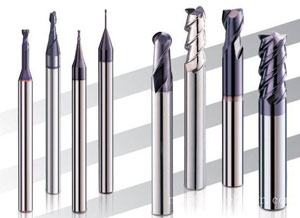The Versatile Applications of Tungsten

Join Eric Smith at Stanford Advanced Materials as he explores the unique properties and diverse applications of tungsten with Dr. Jane Doe, a specialist in materials science. Discover why tungsten, with its exceptional melting point, density, and hardness, stands out as a critical material in various fields.
Learn about tungsten’s use in high-speed steels, tungsten carbide tools, heat-resistant alloys, and high-density applications in aerospace and defense. The episode also delves into tungsten’s roles in electronics, lighting, and chemical processes, showcasing its versatility and importance across multiple industries.
Curious to learn more about tungsten and its applications? Send an inquiry or connect with us on social media.
Welcome back to our podcast. Today, we're diving into a material that truly stands out in both its properties and applications—tungsten. It has the highest melting point of any metal, incredible density, and hardness, making it a material of choice in many advanced applications. To help us explore this versatile element, we have Dr. Jane Doe with us. Dr. Doe, welcome!
Thanks for having me. It’s great to be here to talk about tungsten, a material with such unique characteristics and a broad range of uses.
Absolutely. Tungsten’s properties are remarkable. It’s known for its high melting point of about 3422°C, which is the highest of all metals. It also has high density, close to that of gold, and its hardness is impressive, especially when combined with carbon to form tungsten carbide, which is nearly as hard as diamond. Tungsten’s excellent electrical and thermal conductivity further enhances its utility in various applications.
That’s right. Tungsten’s properties make it incredibly versatile. Let’s start with how it’s used in alloys. Tungsten’s hardness improves the strength and wear resistance of steel, making it essential in producing high-speed steels and tungsten steels. These materials are crucial for manufacturing tools like drills and cutting dies.
And what about tungsten carbide?
Tungsten carbide is a prime example of tungsten’s application. It’s known for its high wear resistance and hardness, nearly matching that of diamonds. Tungsten carbide is commonly used in cutting tools, mining equipment, and wire drawing dies. It’s produced by combining tungsten carbide powder with metal binders in a sintering process.
Moving on to heat and wear-resistant alloys, tungsten plays a crucial role there too.
Absolutely. Tungsten’s high melting point and hardness make it ideal for heat and wear-resistant alloys. These alloys are used in parts that need to withstand extreme conditions, such as aviation engine valves and turbine components. Tungsten alloys are also used in rocket engine nozzles due to their strength and thermal stability.
Tungsten’s density is another interesting aspect. How is it used in high-density alloys?
Tungsten’s density makes it perfect for high-density alloys. These alloys are used in various fields, including aerospace and military applications. For example, tungsten alloys are used in balance weights, armor-piercing projectiles, and even electrical contacts and switches.
In the electronics industry, tungsten also has a significant role.
Indeed. Tungsten’s high melting point and low evaporation rate make it valuable in electronics. It’s used in filament wires for incandescent and halogen lamps and in electronic tubes. Its properties also make it suitable for TIG welding and other similar applications.
And in the chemical field?
Tungsten compounds are used as catalysts and pigments. For instance, tungsten sulfide is used as a lubricant and in gasoline synthesis, while tungsten oxide is used in paints. It also plays a role in fluorescent powders and various chemical applications.
We’ve discussed quite a bit about tungsten today. It’s a material with diverse applications, which we’ve touched on in previous episodes as well. For those interested, you can check out our past podcasts where we delve into tungsten’s importance in different contexts.
That’s right. Tungsten’s range of uses is extensive and quite fascinating.
Thank you for this insightful discussion on tungsten.
My pleasure. It’s been great to explore tungsten’s many applications with you.
And thank you to our listeners for tuning in. We’ll be back with more exciting topics soon. Until then, stay curious!
